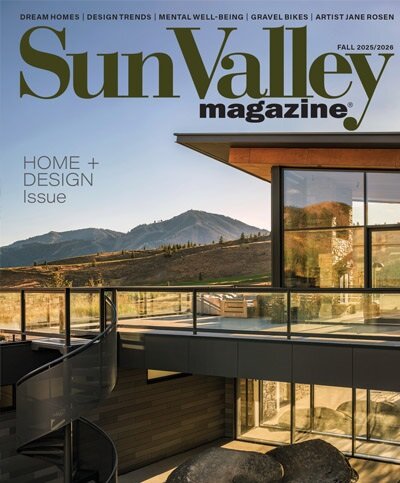In 1999, Kathleen and Brian Bean drove east of Carey to the land that would become their legacy. The Bay Area couple—Brian, a retired Marine turned investment banker, and Kathleen, a development director for The Nature Conservancy’s California operation—set out for a new start, a place to put their visions of conservation to concrete work.
Eventually, they found a ranch.
The catch: They’d have to learn to run it like one.
“I thought it was crazy,” Kathleen said earlier this year. “I thought it was a really big idea. And I wasn’t so sure we could pull it off. But Brian was determined, so away we went.”
Today, Lava Lake Lamb’s reach spans nearly 825,000 acres—24,000 of deeded ranchland with grazing allotments encompassing another 800,000. The Beans’ project runs 125 miles tip to tail, rising some 8,000 vertical feet from the sagebrush steppe of the Snake River Plain to the highest alpine peaks of the Pioneer and Boulder mountains, brushing 12,000 feet high.
For Brian, it has become a laboratory larger than Rhode Island. He remains energized by the details and by Lava Lake’s central question: How can a ranch raise its livestock and restore the land they graze for everything else that lives there? The answer he’s found requires a different sort of bottom line.
The task of herding sheep hasn’t really changed since John Hailey, the city’s namesake, trailed his first bands into the Wood River Valley during the 1860s: Keep the hooves moving, the flocks safe, and the lambs fat. Where it was managed at all, the range was managed in broad chunks, with flocks taking what they could from allocated acres and, hopefully, leaving enough for next season’s migration nearby. The Beans decided to approach it the other way. What didn’t they want to take—and what other values could be found on the land? Working with The Nature Conservancy, they mapped everywhere a sheep might go and estimated everything it might eat. Then, they blocked off portions to leave for everything else.
Brian Bean could tell you more—much more. And, in her way, so could Kathleen, whose patient, loving cadence has as much to do with Lava Lake’s success as Brian’s bookish precision.
In some ways, the ranch represents a return to both of their roots. Kathleen grew up on a farm in Iowa before her family decamped for California. Brian studied botany and biology until he found a career in finance. And at the ranch, they’ve deepened their passions. While Brian developed his grazing protocol, Kathleen went back to school, this time to study theology. Her day job is as assistant rector at St. Thomas Episcopal Church in Ketchum. The link between the two, she says, “is obvious and easy.”
“We are obligated—it should be our privilege and joy—to care for the earth, for all creatures,” she said. “God loves everything that God made, and that includes insects and rare plants and sheep and people.
“We’re all in this together.”
Twenty-six years in, this ad hoc motto has found its way into the heart of the Beans’ project. For both the Beans, the need for these connections— for Brian, physical; for Kathleen, spiritual—is as focused now as ever. Their customers seem to agree. Lava Lake entered the market in the early days of the modern local food movement, 81 years after Idaho’s 1918 herding peak. In 2024, the state grazed about 10% of the 2.65 million sheep it ran back then. In a small way, Lava Lake still aims to revamp the state’s heritage industry and to use it as leverage in the burgeoning push to bring food closer to home.
“Everyone’s heart is in the right place,” said Julie Johnson, owner of NourishMe, a Ketchum grocer specializing in local food, including Lava Lake lamb.
When we spoke in March, the Beans had put the heart of the Lava Lake ranch on the market. Their tone swayed, sometimes a bit uncertain, other times elegiac—a couple weighing their next act while considering the meaning of their last, on the land and what lives there, on the industry and the people they’ve come to love. For friends they’ve made along the way, it’s already clear.
“It’s a really powerful act to change the way people view ranching in Idaho,” said Amy Mattias, executive director of the Sun Valley Institute for Resilience and a one-time Lava Lake employee. “A lot of people in our community don’t necessarily think highly of ranching because they’ve seen it done poorly in other areas and in their beloved public lands. I think the Beans have shown a lot of folks that it can be done differently. And, when it’s done in that way, it can be beneficial to us all.
“Plus,” Kathleen added, “people love having Lava Lake Lamb on the menu.”

